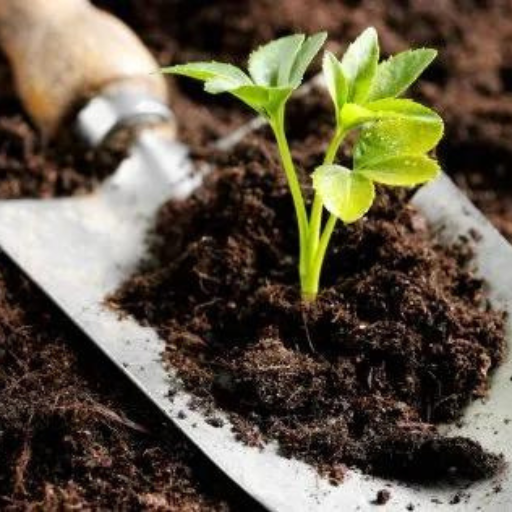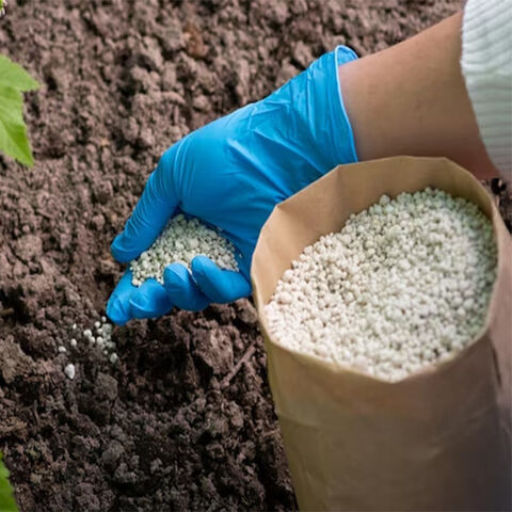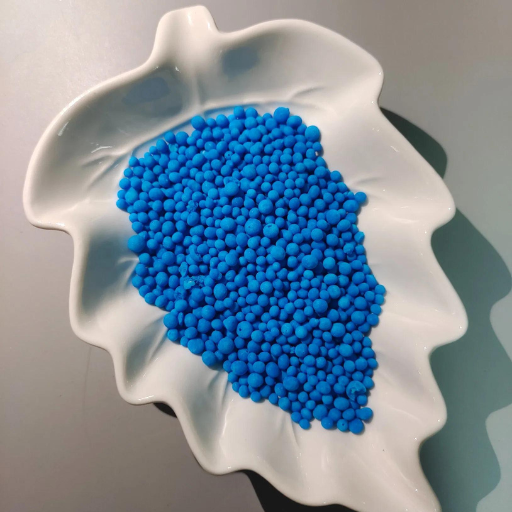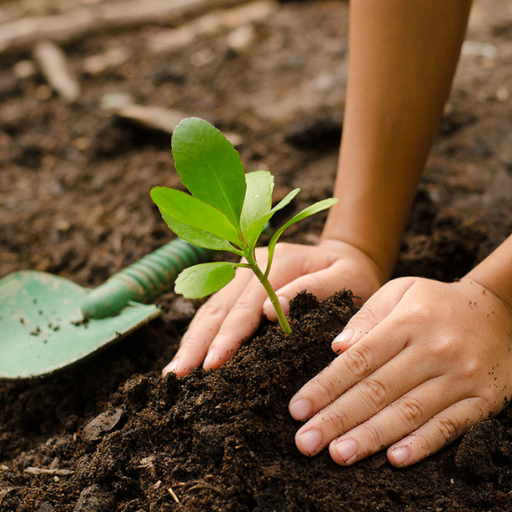Gardening enthusiasts and professional horticulturists alike are constantly searching for the best ways to ensure their plants thrive. One such method is the use of organic fertilizers, which provide essential nutrients in a natural form. In this blog, we will delve into the numerous advantages of 20-20-20 organic fertilizer, a balanced nutrient blend that promises to boost plant health and yield. Through an exploration of its composition, application methods, and benefits, readers will gain a comprehensive understanding of how this particular fertilizer can make a significant difference in their gardening efforts. Join us as we uncover the science behind 20-20-20 organic fertilizer and why it might just be the best choice for your green thumb ambitions.
What is 20-20-20 Fertilizer?

Chemical Composition and Nutritional Values of 20-20-20 Fertilizer
The 20-20-20 fertilizer is a mixed nutrient that contains equal parts of nitrogen (N), phosphorus (P) and potassium (K). What this means is that each nutrient has a concentration of 20%. Leaves and stems grow strongly with the help of nitrogen. Phosphorous acts as the primary root developer, which then blossoms to produce flowers. Lastly, potassium helps improve the overall plant health by making it more resistant to diseases while enhancing water uptake. This combination makes 20-20-20 fertilizer ideal for different plants in various stages of growth process as it provides total nutrition essential for optimum plant development and productivity.
How Does 20-20-20 Fertilizer Work?
The idea behind the application of 20-2020 fertilizers is based on providing a balanced supply of the three macronutrients required in plant growth; nitrate-nitrogen, phosphate-phosphorous and potash-potassium. Nitrogen supplies to strong leaves and stems that ensure enough green foliage for photosynthesis. On the other hand, phosphorous forms an integral part into a robust root system, which results in increased energy transfer leading to blooming fruits among others. One key function played by potassium is to support plants defense systems thus helping them combat disease attack besides withstanding drought periods. Due to its equal allocation of nutrients, stage specific life requirements are provided by the 202020 type thus leading to all-round healthy development. This kind of fertilizer does not only provide balanced diet but also is suitable for varied types and phases of cultivation thereby bending equally useful for novice gardeners or professional agronomists.
Organic vs Chemical Fertilizers
Organic fertilizers are derived from natural sources such as compost, manure and bone meal releases nutrients slowly as they decompose gradually improving soil structure and fertility over time. In order to maintain long term soil health, organic fertilizers help promote microbial activity in the soil while also enhancing aeration and water retention. Further, there is less environmental pollution as they minimize nutrient leaching and related problems.
On the other hand, chemical fertilizers are synthetic and have immediate effect. They are designed to provide exact nutrient ratios required for certain plants enabling rapid growth with quick results. However, their use can lead to soil degradation over time as they do not contribute to soil organic matter unlike organic fertilizers. On the other hand when this kind of fertilizer is used in high proportion, it may cause imbalances of nutrients, high levels of salinity and water pollution via rainwater run-off.
In conclusion, although organic manure is environmentally friendly and improves soils in future compared to chemical fertilizers which supply nutrients quickly thus promoting fast plant growth but when misused can lead to environmental problems.
How to Use 20-20-20 Water Soluble Fertilizer?
Blending Instructions: Making the Solution
To make a 20-20-20 water soluble fertilizer solution, just do as follows:
- How much fertilizer to use: Go through the instructions on the package of your fertilizer. For example, a common application rate would be about 1 tablespoon (15 grams) of fertilizer per gallon (3.8 liters) of water.
- Put some water in a container: The use of lukewarm water makes it easier for the fertilizer to dissolve quickly. The amount of water should match with your dose reference, usually one gallon for indoor plants or more for outdoor plants.
- Pouring Fertilizer into Water: You simply need to add measured amount of fertilizer gently while stirring the whole mass continuously until completely dissolved.
- Mix It Up: Stir this solution till all particles break down and mix evenly in order to ensure that there is even distribution of nutrients when applied to crops.
- Using this solution: Use hose end sprayer or watering can so that you can spread the liquid fertilizer around basis for these plants keeping it from touching their leaves directly. Following plant specific recommendations are advised here such as every 1-2 weeks during growing season.
This will enable your plant have balanced nutrient solution so as to enhance growth and development
Frequency of Application: When and How Often?
The frequency at which users apply 20-20-20 soluble fertilizers depends on what type they are and their specific requirements in terms of growth. In general, most plants require fertilizer application like once every two weeks during growing seasons from early spring to late summer hence a widely accepted recommendation is frequent feedings.Accordingly,bungalow lovers often do apply theirs once after every period.For other types such as flowering ones,twice per week seems good.This being off-season,it is however important not to put too much manure.Do not over feed.Monitoring changes will help in making sure that you get enough nutrition into them whenever required.
Best Practices for Application
Placement of the fertilizer is important when you are using 20-20-20 water soluble fertilizers to be effective. The first thing that one should do is wetting the soil before applying so as to avoid the burning of roots. Early in the morning or late in the afternoon are usually best times to apply because at midday there is a lot of heat which can make it evaporate quickly and prevent absorption. In addition, light weather conditions should be maintained during application avoiding extreme temperatures, heavy rains and wind will either wash away or distribute nutrients unevenly across the field. Lastly, users must respect recommended dosages and application schedules for not over-doing with manure but also doing enough for their plants to absorb enough nutrients they need.
Why Choose 20-20-20 Organic Fertilizer?

Why a Balanced NPK Ratio is Essential
Balanced 20-20-20 NPK ratio has numerous advantages for plant health and growth. In this ratio, each element of nitrogen (N), phosphorus (P) and potassium (K) is available at equal levels hence making it essential in all the physiological functions. Nitrogen facilitates robust leaves as well as stem growth; phosphorus encourages root development and makes flowers/ fruits while potassium enhances general plant health resulting in resistance to diseases and any environmental stressors. It is particularly useful as a general-purpose fertilizer because it can be used by many different plants to develop strong roots, healthy foliage, and colorful flowers. Gardeners who want balanced and vigorous plant growth across species should choose such a product.
Advantages Of Organic Ingredients
Organic components in fertilizers provide several unique benefits to the wellbeing of plants and the environment at large. One of them is that they aid in soil structure improvement thus increase its ability to hold nutrients and water which help in having healthy root systems leading to more robust plant growth. Conversely, organic fertilizers release nutrients slowly hence ensuring their availability throughout without causing nutrient burn or rapid depletion unlike synthetic options, increasing microbial activities on beneficial organisms that enrich the soil through breakdown of organic matter released from these fertilizers . They are also associated with less dangerous chemical run off into local water bodies promoting sustainable gardening practices within communities. Gardeners often prefer using organic types since it supports environmentally friendly cultivation methods that are good for both their crops and surrounding ecosystems.
Soil Health Implications And Plant Growth
The use of manure or compost for organic farming can greatly improve soil fertility thus improving crop yields as well. It introduces humus into the soil which helps in holding moisture for longer periods as well as retention of nutrients within it thereby fostering healthier root systems besides making plants more resilient to diseases . Consequently, slow release mechanisms inherent within organic types means no risk of nutrient burn or erratic plant development. This in turn encourages the activities of beneficial microbes responsible for decomposition of organic maters thereby enhancing soil fertility.
In contrast, synthetic options provide an immediate increase in nutrient uptake necessary for rapid plant growth. However, in time excessive use of these can degrade the soil reducing its natural productivity resulting to dependency on chemical inputs. On the other hand, synthetic fertilizers increase nutrient run off rates hence posing risks to local water ecosystems.
Can 20-20-20 Fertilizer Be Used for All Types of Plants?

Indoor and Outdoor Plants Compatibility
For a great number of both indoor and outdoor plants, 20-20-20 fertilizer that connotes a balanced mixture of nitrogen, phosphorus and potassium is commonly appropriate. It equally caters for the basic nutrients to ensure overall plant health and growth. This can be used on indoor plants to make them have lush leaves and strong stems hence more preferable for houseplants and decorative foliage. However, such nutrient balance helps in encouraging robust growth as well as flowering development in outdoor plants like flowers, vegetables, shrubs etc.
Nevertheless, one has to be aware of individual plant species specificities. Thus some plants may require more specific fertilizers for correcting certain nutritional deficiencies or addressing particular stages of their growth respectively. To avoid over-fertilizing which is detrimental not only to plants but also affects soil fertility adversely always observe the recommended rates of application by manufacturers in addition to frequency of its usage. Finally, although 20-20-20 fertilizer is an efficient and multifunctional product that can be used universally yet customizing your approach towards fertilization based on the needs different crops have would yield best results.
Special Considerations on Flowering Plants
When using 20-20-20 fertilizer on flowering plants there are a few things one should remember in order achieve improved blossom quality and healthy life. While blooming occurs flowering vegetation nourishes differently compared with their growing phase. Over-supplying nitrogen causes leafiness rather than blossoming it like when there is excessive supply of this element. During the period for flowering therefore applying fertilizers having higher levels of phosphorus might favor vibrant blooms instead. This fosters root formation as well as good flower production though while carrying out this exercise it’s essential to follow guidance specifically designed for each kind of these bloomers thereby adjusting the way you apply fertilizers at all times accordingly depending on such protocols from either planting guides or contacting local horticulture experts so as to optimize results.
Is 20-20-20 Fertilizer Safe for Edible Plants?
Yes, when used properly, 20-20-20 fertilizer is generally regarded as safe for edible plants. This is because it provides a balanced mixture of essential nutrients necessary for healthy growth and high yield. However, one must observe the recommended application rates and frequency so as not to over-fertilize which would otherwise result into imbalance of nutrients in the soil leading to chemical residues that may be harmful if consumed. After using this product, ensure thorough watering process is done to avoid accumulation of excess nutrients in the soil. Therefore always adhere to manufacturer’s guidelines and possibly consider consulting local agricultural extension officer or gardening experts about how to use 20-20-20 fertilizer on your specific edible crops for best results that are also safe.
What are Common Issues and Troubleshooting Tips?

Symptoms and Solutions of excessive Fertilization
In my experience, over-fertilization manifests in several ways. This is often referred to as “leaf burn,” where leaf edges turn yellow or brown. This happens due to the water stored in the plant cells being drawn out by excess salts. Other plants may have short statures despite regular watering, wilting even after having enough water supply or presence of white crusts on top of the soil which show that there’s salt build up. To correct for over-fertilized soils, my first step involves leaching excessive nutrients with plenty of water by flooding the ground. It should be noted that it is very important to allow water to completely drain for the purpose of avoiding root rotting. Alternatively, if the plant is potted; I could opt to repot it using fresh soil. Do not fertilize again until signs of recovery start showing on your plant and always follow recommended dosages henceforth as a precautionary measure against recurrence.
Best Practices for Storing Fertilizer
Proper storage conditions are important for maintaining fertilizer efficacy and ensuring safety standards. The first thing I do is keep fertilizers in their original containers so as to get all necessary information about a product including safety precautions. In this case, they are stored in cool dry place away from sunlight and moisture since these elements can degrade its quality over time. Bags should be tied tightly or placed inside air-tight containers which will prevent them from getting into contact with air and humidity that might make them lump together or become spoilt easily due to dampness. Another thing I do is keeping fertilizer beyond reach by children and animals at home ideally in a locked cabinet or high shelves so that ingestion and mishandling is avoided accidentally . Finally, they are well labelled so as not confuse any other person taking new products while disposing off expired or damaged ones according local laws thus protecting environment and personal health simultaneously.
Frequently Asked Questions (FAQs)

Q: Can my lawn use a 20-20-20 plant food fertilizer?
A: Yes! Certainly! The choice of 20-20-20 plant food fertilizer is good for your lawn because it strengthens the blades, makes the roots healthier and therefore makes turf luxurious and green.
Q: What are the qualities of 20-20-20 that make it an effective plant booster?
A: A balanced combination of nitrogen, phosphorus and potassium in this formula guarantees plants all necessary elements for growing. This blend is naturally invigorating, enhancing plant vigor as well as promoting high yields.
Q: Can I apply water soluble 202020 to my vegetable garden?
A: Yes, go ahead with 20-20-20 water soluble on vegetable gardens. It helps in maintaining a healthy nutrient supply which is crucial to promote growth and productivity of several vegetables.
Q: How often do I need to put down my plants?
A: Sometimes you may need different applications based on what stage your plant is at. However generally, one should be able to apply this product every two up to four weeks during the growing season especially when using GS Plant Food’s hydroponic fertilizer (9 – 6 – 12).
Q: Can I utilize that liquid potted flower food called jacks classic balanced feed solution formula for my hydroponics garden system?
A : It works well with hydroponic systems since it is water soluble thus blending into the hydroponic solutions and offering a balanced nutrient supply for the plants grown in such systems.






